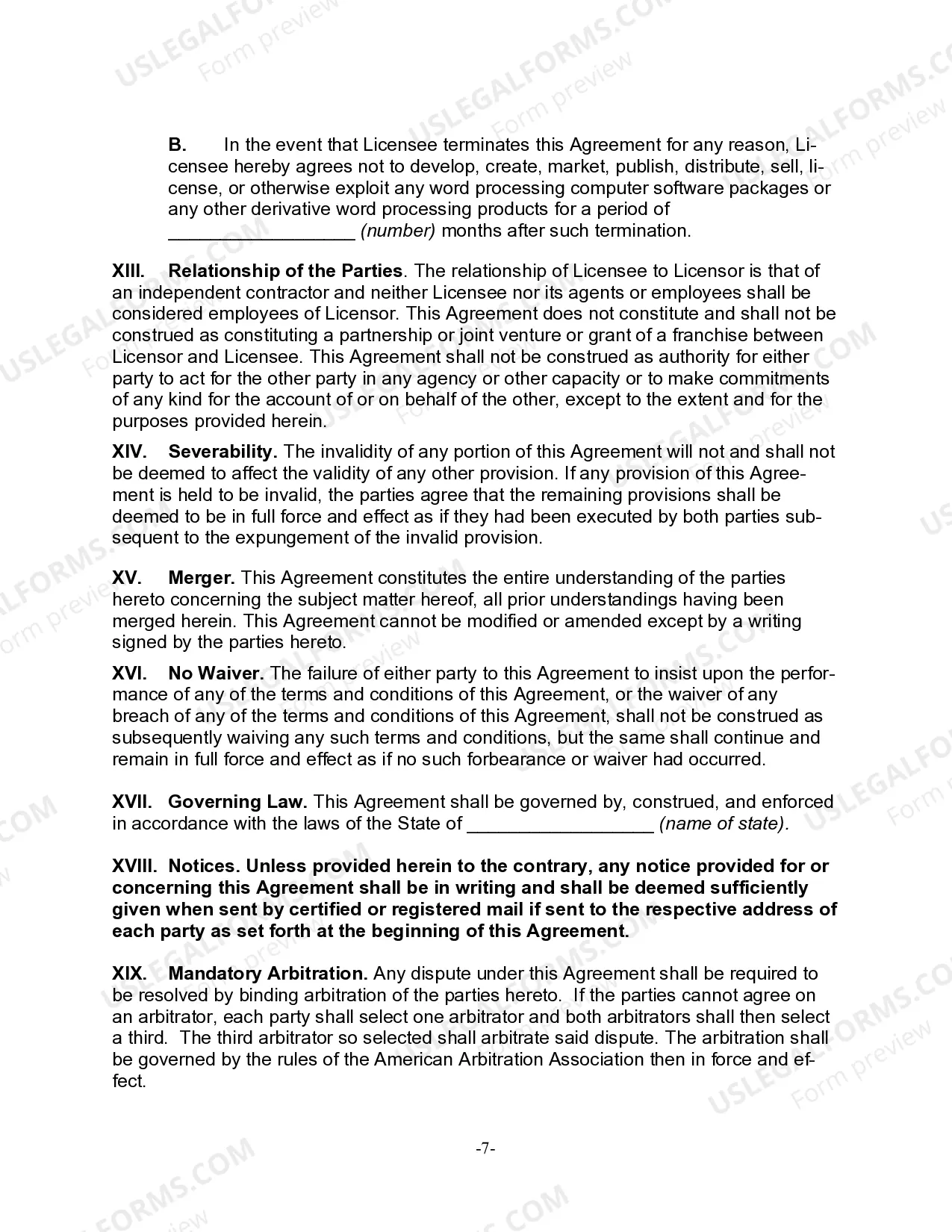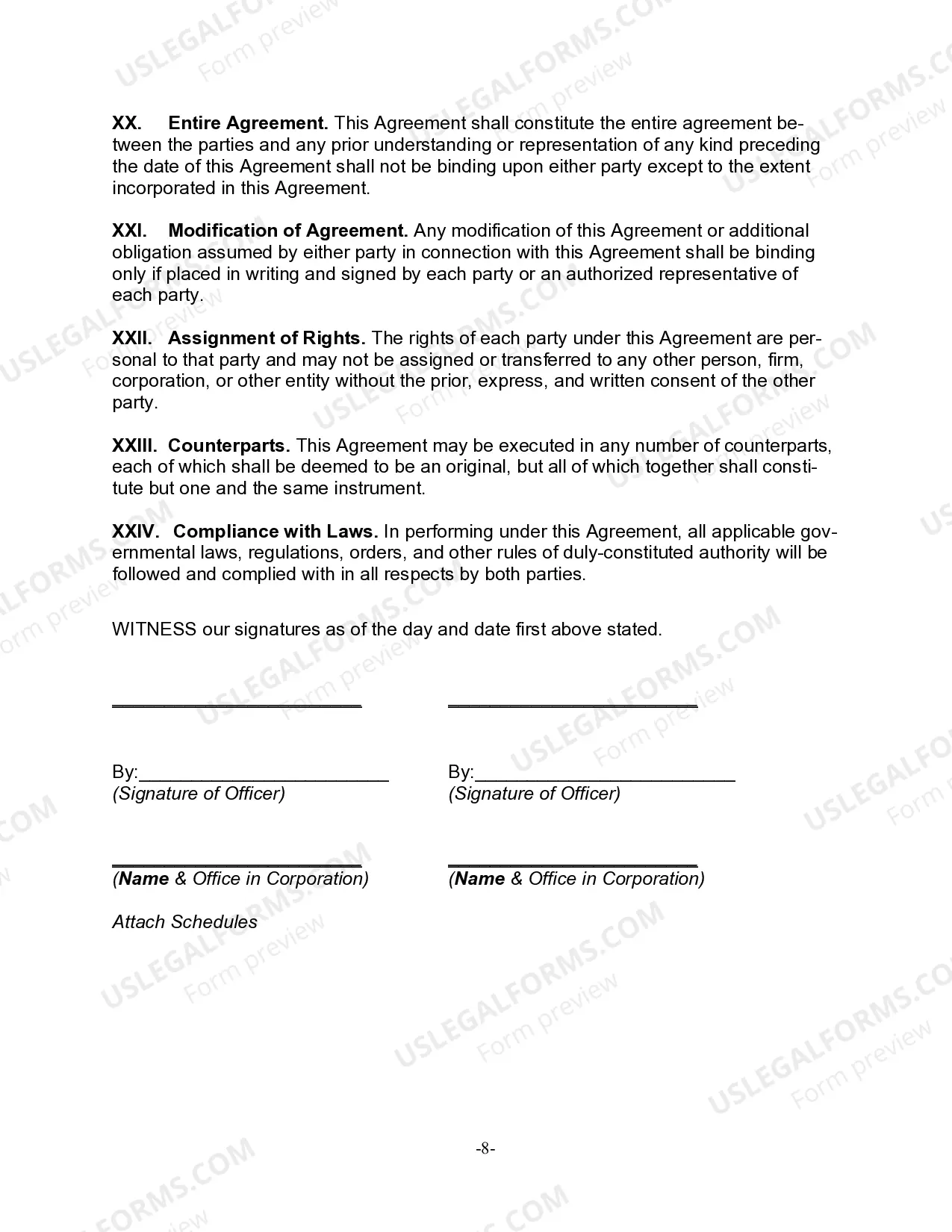A Nassau New York Trademark License Agreement for a Software Product in Word Processing Program in Education is a legal contract that grants the licensee the right to use a trademark owned by the licensor in association with a software product within the educational sector. This agreement is essential for ensuring the protection of intellectual property rights and regulating the usage, distribution, and branding of the software. Keywords: Nassau New York, Trademark License Agreement, Software Product, Word Processing Program, Education. There are a few different types of Nassau New York Trademark License Agreements for a Software Product in Word Processing Program in Education, each catering to the specific requirements and circumstances of the licensor and licensee. Some commonly found types are: 1. Exclusive License Agreement: This type of agreement grants the licensee the exclusive right to use the trademark within a specific territory and for a set period. It prevents the licensor from granting licenses to third parties within the designated jurisdiction. 2. Non-Exclusive License Agreement: This agreement allows the licensee to use the trademark alongside other licensees without exclusivity. The licensor retains the right to grant licenses to multiple parties simultaneously. 3. Perpetual License Agreement: A perpetual license grants the licensee the right to use the trademark indefinitely, without any fixed termination date. This type of agreement is suitable when both parties desire a long-term, ongoing relationship. 4. Limited Term License Agreement: In contrast to a perpetual license, a limited term license agreement restricts the duration of use to a specific period. After the agreed-upon term, the licensee must obtain a new license or cease using the trademark. 5. Single-Product License Agreement: This type of agreement is tailored for licensing a trademark for a specific software product, such as a word processing program in the education sector. The licensee can only utilize the trademark in relation to that particular software and its associated educational services. 6. Multiple-Product License Agreement: This agreement covers licensing the trademark for multiple software products developed by the licensor within the word processing program category. It allows the licensee to use the trademark on a range of related software products. Careful consideration must be given to the specific terms within each type of agreement, including limitations on use, quality control standards, royalty payments, sublicensing rights, termination clauses, and dispute resolution mechanisms. A qualified attorney should be consulted to customize the agreement to the needs and preferences of the parties involved in the licensing process, ensuring the legal and intellectual property interests of all parties are protected.
Nassau New York Trademark License Agreement for a Software Product in Word Processing Program in Education
Description
How to fill out Nassau New York Trademark License Agreement For A Software Product In Word Processing Program In Education?
Laws and regulations in every area vary throughout the country. If you're not an attorney, it's easy to get lost in a variety of norms when it comes to drafting legal documents. To avoid high priced legal assistance when preparing the Nassau Trademark License Agreement for a Software Product in Word Processing Program in Education, you need a verified template legitimate for your county. That's when using the US Legal Forms platform is so advantageous.
US Legal Forms is a trusted by millions web collection of more than 85,000 state-specific legal forms. It's a perfect solution for specialists and individuals looking for do-it-yourself templates for various life and business occasions. All the documents can be used multiple times: once you pick a sample, it remains available in your profile for further use. Therefore, when you have an account with a valid subscription, you can simply log in and re-download the Nassau Trademark License Agreement for a Software Product in Word Processing Program in Education from the My Forms tab.
For new users, it's necessary to make several more steps to get the Nassau Trademark License Agreement for a Software Product in Word Processing Program in Education:
- Take a look at the page content to make sure you found the correct sample.
- Utilize the Preview option or read the form description if available.
- Search for another doc if there are inconsistencies with any of your requirements.
- Utilize the Buy Now button to get the document when you find the right one.
- Opt for one of the subscription plans and log in or sign up for an account.
- Decide how you prefer to pay for your subscription (with a credit card or PayPal).
- Select the format you want to save the file in and click Download.
- Fill out and sign the document in writing after printing it or do it all electronically.
That's the simplest and most affordable way to get up-to-date templates for any legal reasons. Find them all in clicks and keep your paperwork in order with the US Legal Forms!












